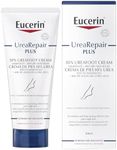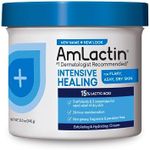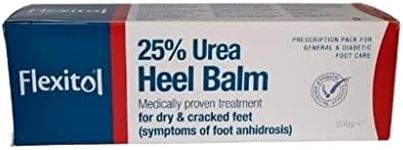Buying Guide for the Best Cracked Heel Creams
Cracked heel creams are designed to help heal and moisturize dry, cracked skin on your heels. When choosing a cracked heel cream, it's important to consider several key specifications to ensure you select the best product for your needs. Understanding these specifications will help you make an informed decision and find a cream that effectively addresses your specific skin concerns.IngredientsIngredients are the substances that make up the cream. This spec is important because certain ingredients can provide specific benefits, such as deep hydration, healing, or soothing properties. Look for creams with ingredients like urea, glycerin, shea butter, and essential oils, which are known for their moisturizing and healing effects. If you have sensitive skin or allergies, check for hypoallergenic formulas or avoid certain ingredients that may cause irritation.
Moisturizing CapabilityMoisturizing capability refers to how well the cream can hydrate your skin. This is crucial for treating cracked heels, as dryness is a primary cause of the condition. Creams can range from light to heavy moisturizers. Light moisturizers are suitable for mild dryness, while heavy moisturizers are better for severe cracks and extremely dry skin. Choose a cream based on the severity of your heel cracks and your skin's overall dryness level.
Healing PropertiesHealing properties indicate the cream's ability to repair damaged skin. This spec is important because cracked heels often require more than just moisture; they need ingredients that promote skin regeneration and healing. Look for creams with ingredients like allantoin, panthenol, or vitamins A and E, which are known for their healing benefits. If your heels are severely cracked or painful, opt for a cream with strong healing properties.
Absorption RateAbsorption rate refers to how quickly the cream is absorbed into the skin. This is important because a cream that absorbs quickly can provide faster relief and is less likely to leave a greasy residue. Creams with a high absorption rate are ideal for daytime use, while those with a slower absorption rate may be better suited for overnight treatment. Consider your daily routine and preference for how the cream feels on your skin when choosing the absorption rate.
FragranceFragrance is the scent of the cream. This spec is important for personal preference and comfort, as some people may prefer a scented cream while others may opt for fragrance-free due to sensitivities or allergies. Fragrances can range from floral to medicinal scents. If you have sensitive skin or prefer a neutral scent, choose a fragrance-free or lightly scented cream. If you enjoy a pleasant aroma, select a cream with a fragrance that appeals to you.
PackagingPackaging refers to the container and delivery method of the cream. This is important for convenience and ease of use. Creams can come in tubes, jars, or pump bottles. Tubes and pump bottles are generally more hygienic and easier to use, while jars may allow for easier access to the product but can be less sanitary. Consider how you plan to use the cream and choose packaging that fits your needs and preferences.















